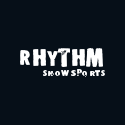HELMET BUYING GUIDE
Should you wear a helmet?
The answer is yes!
As the sport continues to progress and the equipment becoming more advanced, people are skiing faster and jumping higher in increasingly challenging terrains.
Helmets are now becoming more comfortable, warm, versitile and stylish.
How to choose a snow helmet
Fit: Like apparel, the fit of your ski helmet is cruicial and personal.
A helmet needs to be comfortable enough to wear all day long, and the best fit will have no headache inducing pressure points.
Additionally a ski helmet offers protection from the cold and wind.
The fit directly affects comfort and the efficiancy of elemental protection.
Each manufacturer offers a sizing chart, in centimeters, based on head circumference just above the ears.
Asian Fit/ Round contour fit
Same as goggles we have Asian fit also known as Round Contour fit.
The helmet is rounder and flatter across the top of the head to fit certain ethnicities.
Helmet Materials and protective technology.
What is MIPS
MIPS stands for multi-directional impact protection system.
It is a low-friction layer inside a snow helmet that allows a multi-directional movement of 10-15mm on certain angled impacts, intended to help reduce rotational force to the head.
Rotational motion is a common cause of concussion and more severe brain injury in oblique hits to the head
Materials
Hardshell/ Injection Mold
This is your "skateboard style helmet. These helmets use ABS (ACRYLONITRILE BUTAINENE STYRENE) a tough and impact resistant plastic bonded to the EPS foam.
It is a larger profile, heavier and can have less venting opportunities but is at a lower price point.
In-Mold
An in-mold helmet consists of a thin polycarbonate (A durable plastic with high impact resistance) shell filled uniformly and thoroughly with expanded polystyrene (EPS) a rigid and tough foam in a single process.
It is lighter in weight and lower profile than a hardshell helmet, more venting options meaning higher in price point.
Goggle Compatibility
Aside from a good fit, a helmet's compatibility with the goggles you'll be using is highly important.
You want you goggles to sit comfortably under your helmet, no pushing down on the nose and little to no gap between your helmet and the top of the goggle.
























